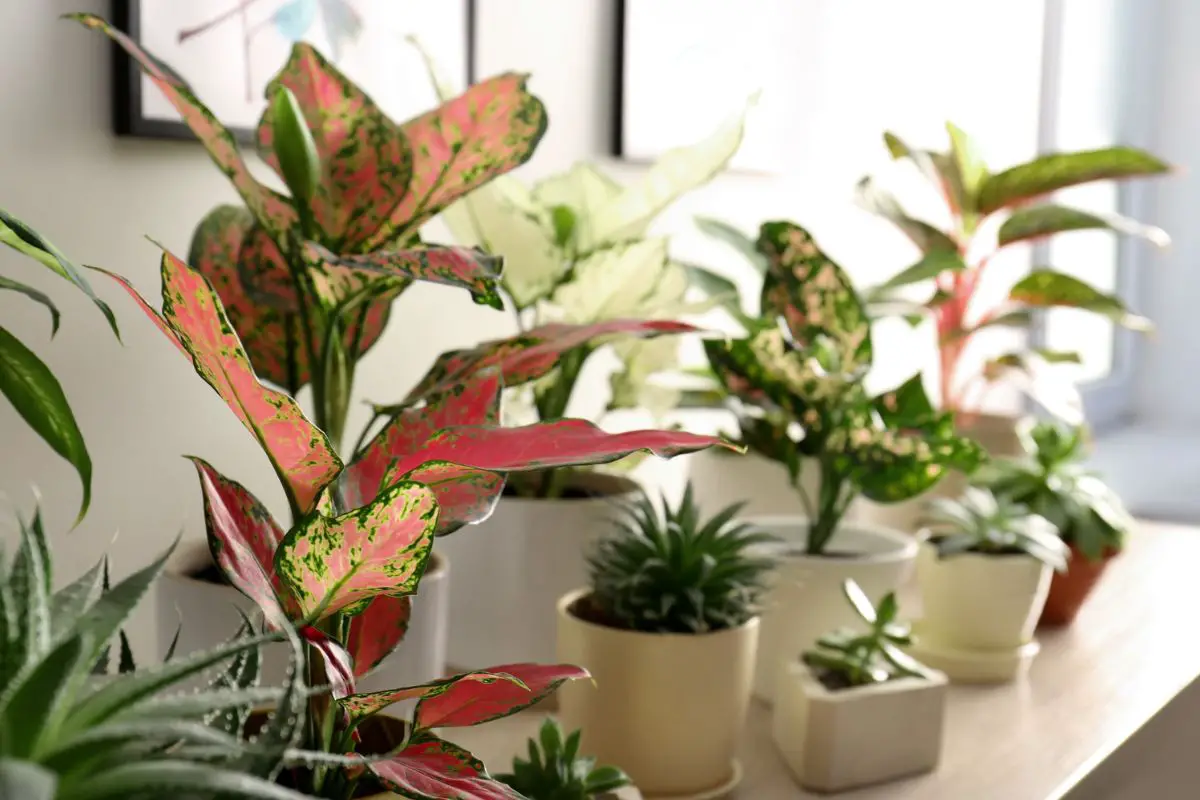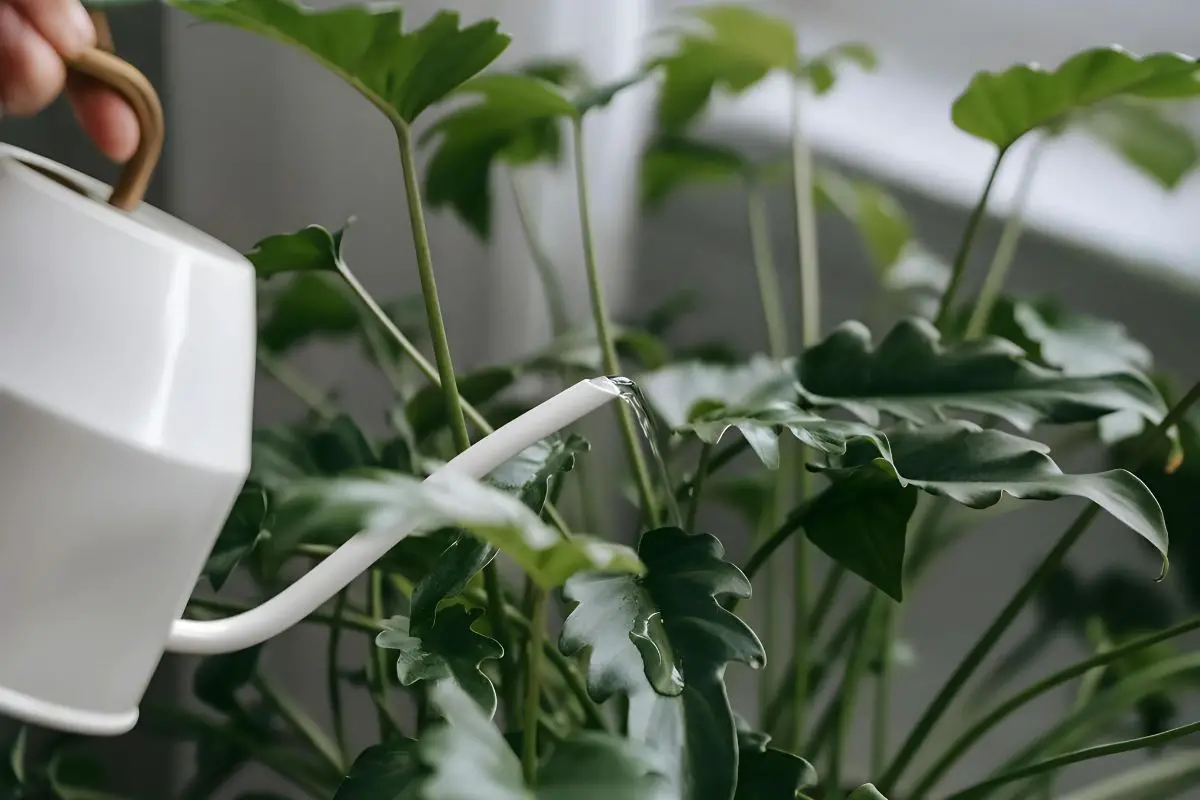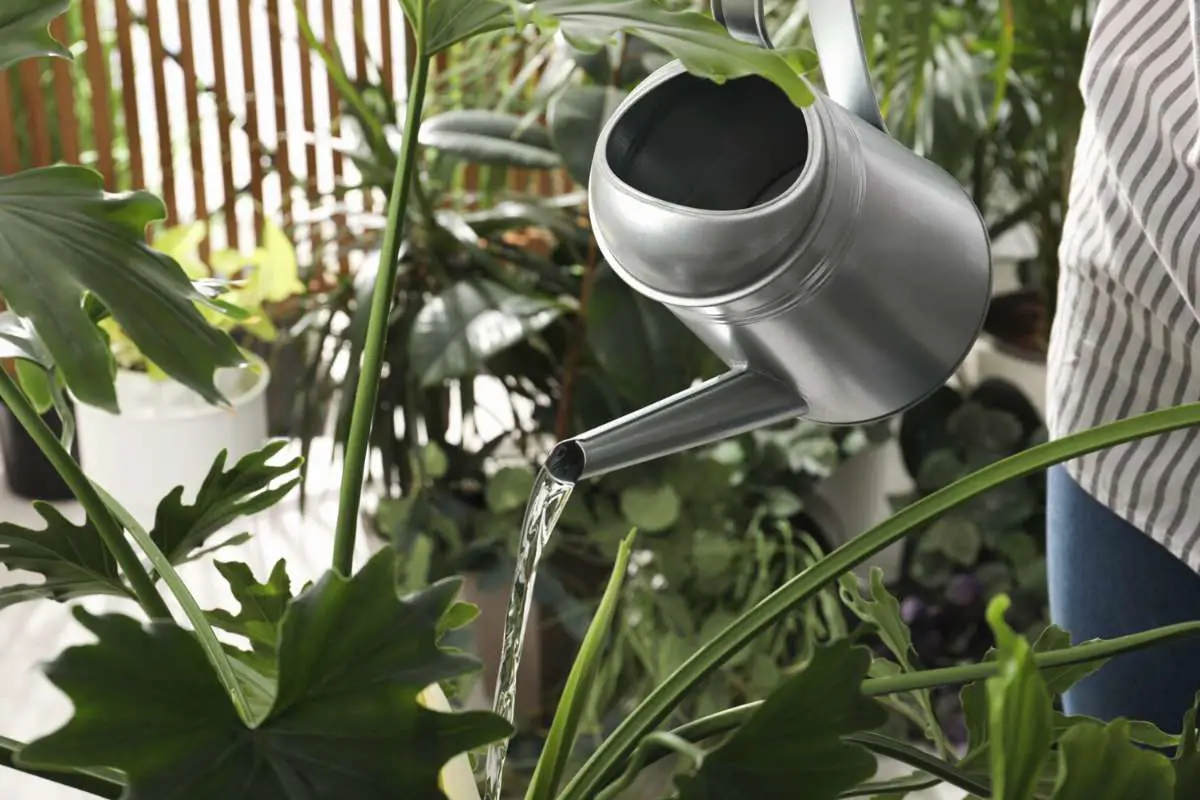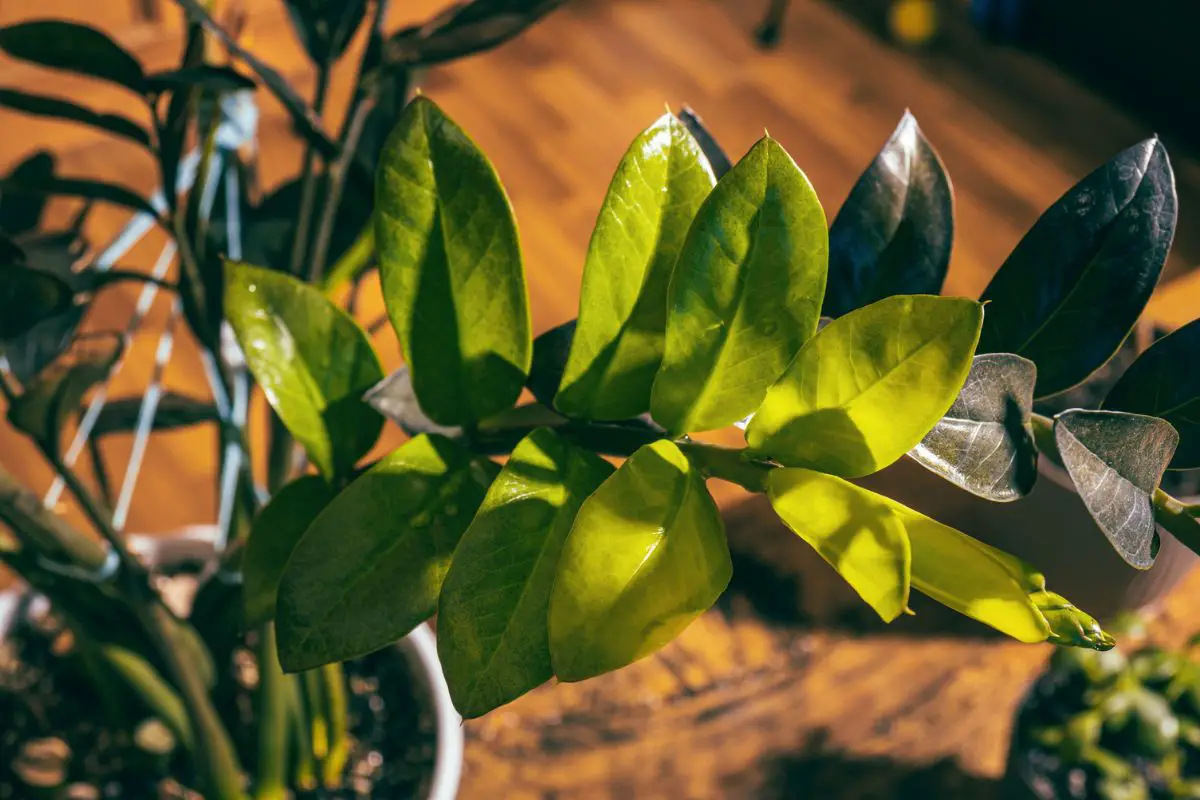Fungus gnats are the last thing any farmer or gardener wants to see during their daily check. They can affect how your plant behaves, stunt its growth, and make for unwanted pests in your home or outdoor sanctuary. Every gardener knows there are such things as “good pests,” but fungus gnats aren’t one of them.
Here are six strategies for dealing with fungus gnats in your soil:
- Sprinkle neem oil.
- Use hydrogen peroxide.
- Set up sticky traps.
- Set up liquid traps.
- Try a nematode soak.
- Repot your plant and sanitize the soil.
Below, I’ll take you through everything you need to know about how to deal with fungus gnats using the above suggestions. Afterward, I’ll provide some more information regarding the phenomenon, the importance of getting rid of it, and the measures you can take to stop it from happening again.
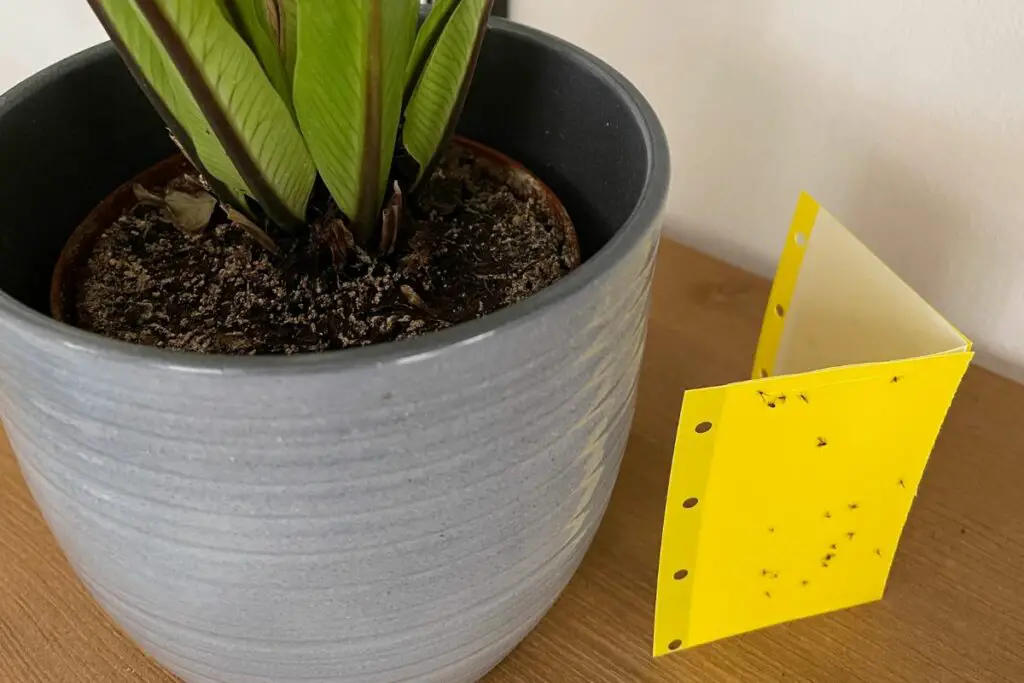
What Are Fungus Gnats?
Fungus gnats are tiny insects that can infest your soil. They look like tiny black gnats, similar to fruit flies you might find flying around your bananas. The larvae of fungus gnats feed on plant roots.
Fungus gnats are harmless to humans, but their tiny larvae are laid deep in the soil and eat on small roots in your plant. This can lead to stunted growth, wilting, or even death for your houseplants.

Identifying the Pests
If you’ve brought a new plant home and have found minor bugs flying around it as soon as you step through the door, you likely have fungus gnats. They have dark wings and can be anywhere from 1/16 to 1/8 inch (1.6 to 3.2 mm) long.
They look very similar to fruit flies or mosquitos and are commonly mistaken for them. Typically, you’ll get rid of a fruit fly the same way you’ll get rid of a fungus gnat, so there’s no harm in making a mistake. However, the causes of their infestation are a bit different.
Causes of Infestation
Fungus gnats could have hitched a ride on your plant when you got it from the store or the nursery. They are attracted to moisture and light, which is why they may be hanging out around your plants (because you are providing the plants with moisture and light).
Gnat Life Cycle
Adult gnats have a very short lifespan, lasting only 7-10 days. However, the females will likely produce hundreds of eggs in the moist potting soil within this short period. The eggs can hatch within a week.
After which, the larvae have up to two weeks to feed on your plant’s roots before turning into pupae. The pupae will then open up after 4-7 days to release adult fungus gnats and the cycle repeats. Overall, the life cycle of fungus gnats lasts 4-6 weeks.
That said, many generations can grow within a year, meaning that infestations can quickly get out of hand. They can also quickly spread from one houseplant to another. If you bring in a new houseplant with soil infested with fungus gnats and larvae, you’ll soon find your entire home garden infested.
That’s why it’s crucial to isolate new plants for at least 4-6 weeks before introducing them to your indoor garden.
How to Treat a Fungus Gnat Infestation
So, how should you deal with fungus gnats?
Fungus gnats aren’t the same as helpful ladybugs or beneficial fungi. Turning to pesticides might be your first thought, but pesticides can be harmful to your plants and aren’t something you want to spray without a second thought in your home.
If the infestation has gotten worse, as it’s affecting your entire living space, you may need to call an exterminator. However, if you’ve just got a few hanging out around your house plant, you can handle it on your own.
The best way to deal with fungus gnats is to prevent them, but if it’s too late, you can isolate your infested plant so the infestation doesn’t spread, and then you can try some of the methods below to get rid of them.
1. Sprinkle Neem Oil
Neem oil is a long-used natural method to get rid of pests. You can find neem oil in your local grocery store or bigger department stores. You can also order neem oil online.
You should always have a little neem oil on hand because it naturally provides a plethora of benefits to your plants. It also works on other common plant pests like aphids, mites, and beetles.
Here are a few ways to use neem oil as a pesticide:
Spray Treatment
Fungus gnat eggs and pupae typically rest on the top 1-2 inches (2.5-5 cm) of the soil, so you can eliminate them using a spray treatment.
Mix a tablespoon of neem oil with a liter (0.26 gal) of water and a tablespoon of liquid soap (which helps it stick to the plant rather than just slide off). You can place the solution in a spray bottle to make the application more convenient.
Spray the solution on your plant’s leaves to repel the adult gnats or spray directly into the soil. Do this about once a week and check back with your plant. If your plant goes on without wilting or showing any damage, you can apply it a little more frequently for 4-6 weeks or until all fungus gnats are gone.
Soil Drench
Larvae can move deeper into the soil to feed on your plant’s roots before moving closer to the surface for the pupal stage. To eliminate the larvae, you’ll need a more thorough treatment.
You can mix one tablespoon of neem oil with a gallon (3.8 l) of water and one tablespoon of liquid soap. You can use 1 cup (250 ml) of this solution the next time you water your plant. You can use 2 cups (500 ml) for larger pots.
Let it sit in the soil for at least 15 minutes before pouring in freshwater as part of your regular watering routine.
2. Use Hydrogen Peroxide
Hydrogen peroxide is another natural remedy for fungus gnats and other bugs. The EPA has approved hydrogen peroxide for controlling microbial pests on plants, whether they’re indoors or outdoors. It can work as a fungicide, too.
If you’ve got a food crop infested with fungus gnats, you can opt for a food-safe peroxide. These usually have a lower percentage of peroxide versus the one you may have in your first aid kit or bathroom cabinet. The HP Food Grade by Essential Oxygen (available on Amazon.com), for example, is 12% compared to your typical 35%.
The goal is to dilute the solution down to 1% before pouring it into the soil. You can dilute a 12% hydrogen peroxide solution by mixing 1/2 cup (125 ml) with 6 cups (1.5 liters) of water.
You can pour 1-2 cups (250-500 ml) of the 1% solution into your potting soil, depending on the pot size. Let it sit for 15 minutes and rinse with fresh water until you see the excess flow out of the drainage holes.
You can do this every other time you water your plant for the next 4-6 cycles.

3. Set Up Sticky Traps
Sticky traps aren’t the most aesthetically pleasing, but if you use them for a week or two, it’ll be worth not having fungus gnats flying around your home.
Fungus gnats living inside your house are likely to travel from one plant to another or hang out by windows if they have nowhere to lay their eggs. This is why they can become such a big problem within a short time. While outside, they can fly out to another garden and find moisture elsewhere. In your home, they’re trapped and make do to lay their eggs.
I wouldn’t suggest sticky traps for outdoor use because they might deter some beneficial insects from hanging around your garden plants. You won’t get the bees or butterflies pollinating your garden and may accidentally harm some ladybugs. However, indoors, sticky traps should do the trick.
If you’re squeamish, sticky traps might be hard for you to get behind. The results are worth it, though! To use a sticky trap for fungus gnats, you’ll want to hang it right near your plant or get the kind that you can stick right in the soil.
This method won’t eliminate the eggs and larvae that are already in the soil, so it’s best to supplement the effort with a neem oil or hydrogen peroxide soak.
4. Set up Liquid Traps
If you can’t wrap your head around touching a sticky trap and throwing it in the garbage, you’re not alone. Some people can feel extra squeamish around bugs, making sticky traps their worst nightmare. Liquid traps are another viable option.
There are many types of liquid traps and most can be homemade. The water and dish soap trap has been proven effective for fruit and regular flies:
- Use a combination of dish soap, water, and apple cider vinegar.
- In a small container, combine the ingredients and cover them with plastic wrap.
- Poke a few small holes into the trap so that the gnats will get trapped when they fly in.
- I also suggest using a salt and pepper shaker, if you have one.
This method will be beneficial if you have gnats all over your house. You can make a few liquid traps and set them in each room. These are less obvious than a sticky trap and much easier to store away if you want them hidden from guests. Additionally, it may be more palpable for you to get rid of a liquid filled with gnats rather than touching and throwing the sticky traps away.
5. Try a Nematode Soak
Ever heard of fighting fire with fire?
I’ve been talking a lot about possible solutions for those who are squeamish around bugs. However, if you don’t care much either way, you can try a nematode soak.
Soil nematodes are tiny worms that can help consume bacteria, eat fungi, and eat smaller organisms. Additionally, they can eat any organic matter within a plant that may be harmful, like fungus gnat larvae. Many species don’t harm people or plants, either.
Choose Steinernema feltiae nematodes when dealing with fungus gnats. You can get them from some garden supply stores or pet stores or order them online. These stores will provide you with instructions on how to effectively use the biological pesticide, which can come as a drench or spray. Make sure to follow the instructions for safety and effectiveness.
6. Repot Your Plant and Sanitize the Soil
Some may choose to get rid of the infested plant, especially if it keeps sprouting out more and more bugs. While this is certainly an option, if the plant is sentimental or you need to hold on to it, you can try a good old repot. Repotting your plant may be an excellent final step, even if you have gotten rid of the fungus gnats to the best of your knowledge.
Remove your plant from the contaminated pot, try to get as much excess soil as you can off of its roots, and rinse it with clean running water. You can then repot your plant in a same-sized pot with a fresh, sterile potting mix.
You don’t have to get rid of the old pot, but you should wash it with diluted bleach and rinse it thoroughly for future use.
On the other hand, you should either get rid of your contaminated soil or sanitize it. You can sanitize the soil by heating it to no more than 180 °F (82 °C) for 20 minutes in an oven, one batch at a time. Alternatively, you can pour a boiling pot of water over the soil to kill anything living in it.
Both these methods will kill even the beneficial microbes in the soil. If you want to reuse the old soil, you can reintroduce beneficial microbes and organic matter by mixing it with good-quality compost.
How to Prevent Soil Gnats
The above methods can feel like a lot of work. You may be wondering if there’s a way to prevent fungus gnats altogether.
You can prevent fungus gnats by thoroughly inspecting any plant you are bringing home, being careful not to overwater, and being proactive with the treatment if you do find the insects flying around the soil.
Below, I’ll discuss a few basic strategies for preventing fungus gnats:
Inspect Your Plants Thoroughly
Most of the time, fungus gnats were already on your plant when you brought it in. Someone rarely has an indoor garden and suddenly finds a fungus gnat infestation over two months after getting their last plant. As previously discussed, fungus gnats have a life cycle from egg to adult that lasts 4-6 weeks.
Thoroughly inspect plants before bringing them home. Even the highest-quality plant nursery in your area may have a fungus gnat or two lingering. Fungus gnats are especially common in the plants you buy at grocery or retail stores, where little attention may be paid to them.
I’ve been guilty of seeing a discount plant on a rack and taking it home with me just to find a fungus gnat infestation. If a plant is on sale, there may be a reason! Make sure to check your plant thoroughly.
Be Careful of Overwatering
Fungus gnats are highly interested in moisture, so they may fly over to your garden if your plants are exceptionally moist or contain large populations of fungi.
Even if you don’t have any fungus gnats inside your home, you should still be wary of overwatering as it can kill your plant more quickly than fungus gnat larvae can.
Nip the Problem in the Bud
Fungus gnats breed quickly and quickly create a full-blown infestation if you don’t tackle the problem right away. If you bring home an infested plant, don’t wait for it to become an unsolvable problem.
Even one fungus gnat means there could be hundreds of larvae within the potting soil eating at plant roots and ready to distribute their eggs throughout the rest of your house. Act quick!
Final Thoughts
Fungus gnats may inhibit or stunt your plant’s growth. They don’t harm humans or furniture, but they can infest a home quickly and become an unwanted pest in all of your plants.
To deal with fungus gnats, it’s best to attack early and eliminate them with one or two of the methods I’ve listed above.

